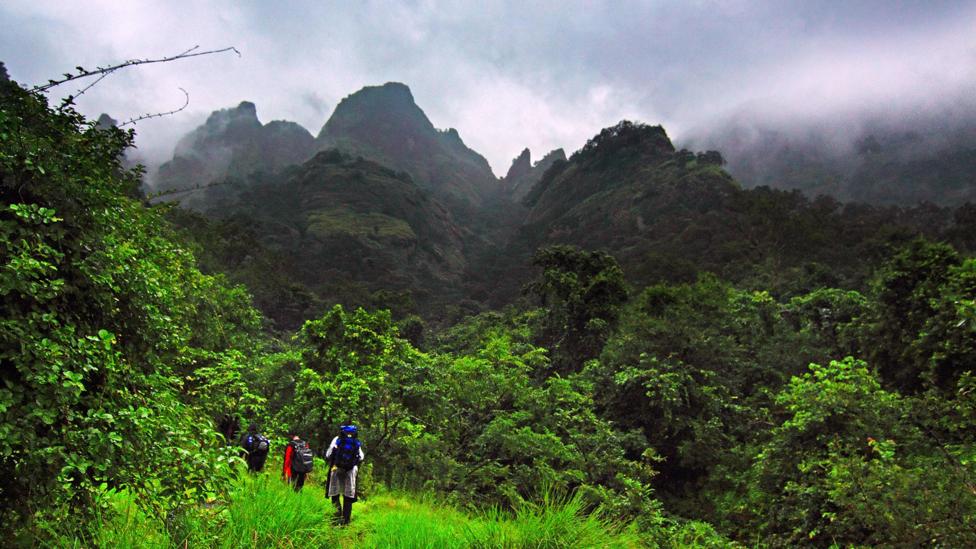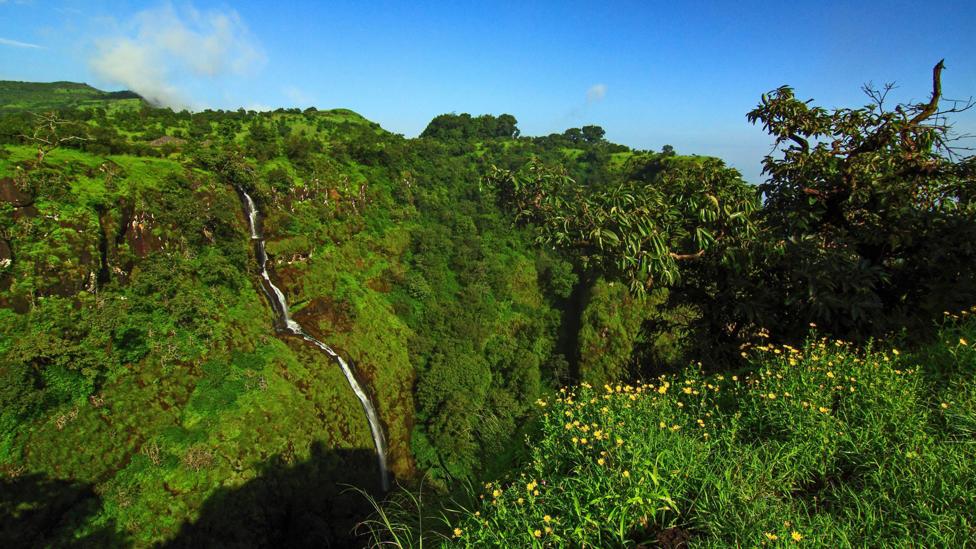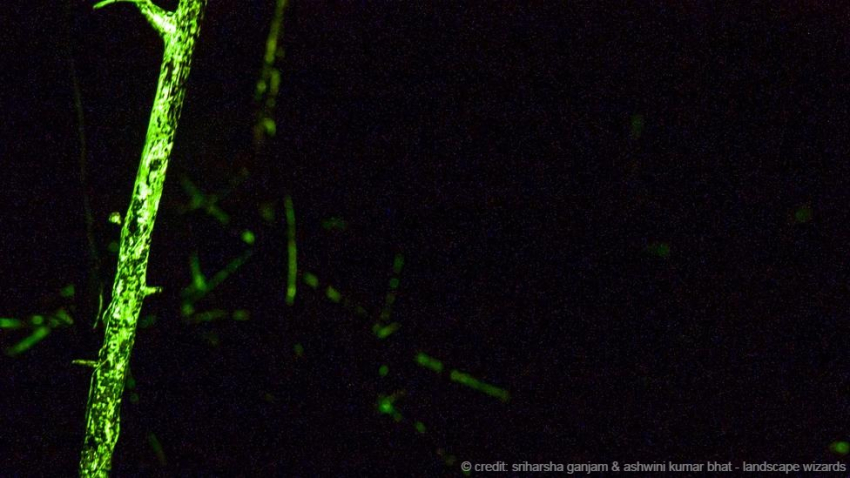Dark storm clouds gathered above the craggy pinnacles in front of us as we readied ourselves to hike through the jungles of Maharashtra’s Bhimshankar Wildlife Reserve, roughly 100km east of Mumbai.
It was late September and monsoon season had been in full force for nearly two months. Despite the leeches, slippery slopes and relentless rain, it was the perfect time of year to witness the unparalleled beauty of India’s Western Ghats. The incessant downpour brought the barren and rocky landscape to life in a vivid shade of green; fresh grass covered nearly every inch of the usually bleak scenery.
A Unesco World Heritage Site and one of the world’s eight biodiversity hotspots, the Western Ghats are among the planet’s richest rainforests, supporting a plethora of endemic flora and fauna. Stretching 1,600km along India’s west coast, from the state of Gujarat to the southern region of Kerala, the Ghats are home to tigers, leopards, the elusive black panther and the world’s largest population of wild Asian elephants. New animal species were discovered as recently as December 2014. But these are just some of the reserve’s more well-known treasures. A more fascinating phenomenon was in store for us later that night.

Deep inside the jungle, a mixture of sweat and rain was trickling down my face as I scrambled through a damp, narrow gorge. Our afternoon hike to the small tribal hamlet of Ahupe had extended late into the evening, hindered by the heavy showers. Night was falling, and when we switched off our torches to wait for the rest of the group, a faint green glow emanated from the ground around us. Astounded, our eyes adjusted to the dark. We could see small patches of fluorescent light shining through the night. The forest was glowing!
During monsoon season, from June through October, these rain-drenched tropical forests can give off an otherworldly glow, caused by a bioluminescent fungus that grows on rotting bark and twigs on the forest floor. Although it occurs in other parts of the world – predominantly in old growth forests in temperate and tropical climates where there is the right mix of moisture and humidity for the bioluminescent fungi to thrive – this mind-boggling phenomenon has only been seen in a few patches of the Western Ghats, particularly in regions within the states of Maharashtra and Goa.

And it’s not an easy phenomenon to spot. While bioluminescent waters and glowing marine organisms are relatively common, terrestrial bioluminescence is far less pronounced, with the only two widely known instances being fireflies and glow worms. Less well known are the 70 – out of nearly 100,000 – species of luminescent fungi, some of which are large enough to easily see. The fungi in the Western Ghats, on the other hand, belong to the Mycena genus, a group of tiny mushrooms that almost look like moss. Scientists still don’t know why they glow.
I couldn’t help but wonder at all the conjecture that glowing wood – as it was popularly known in earlier centuries – must have spawned in the past. Earliest reports came from noted Roman naturalist, Pliny the Elder, who reported the phenomenon in Europe as early as the 1st Century. Some Scandinavian tribes are believed to have used pieces of the glowing wood as markers of their route when venturing deep into the forest. David Bushnell, an American inventor, tried using glowing wood as an underwater light source for the first military submarine, Turtle, in the late 18th Century. Even today, the internet is littered with posts from unsuspecting victims looking for explanations after stumbling upon this little-known phenomenon.

As we hiked onwards towards the Ahupe plateau where we were supposed to camp for the night, my eyes were constantly searching for another faint glow – but it was all in vain. It was a wonderful stroke of luck that we’d stumbled upon that one patch under exactly the right conditions.
Waking up to a clear sunny sky the next morning, I took in the breathtaking views of the famous cliffs of Sahyadris, as the Ghats in Maharashtra are known. Standing on the edge of a deep ravine on one side of the plateau, I looked down into a gorge filled with lush vegetation, wildflowers and a stream that flowed into the plains to meet a brimming lake in the distance. The steep contours formed a dramatic foreground to the rising hills and storm clouds brewing behind me, every inch of earth suffused in a generous green.
A long-standing desire to see these rocky pinnacles and rugged cliff edges in all their lush, fertile glory brought me here in first place. Along the way, however, I’d been extremely lucky to catch a rare glimpse into one of nature’s many spectacular eccentricities.
The article was originally published at BBC Travel.














